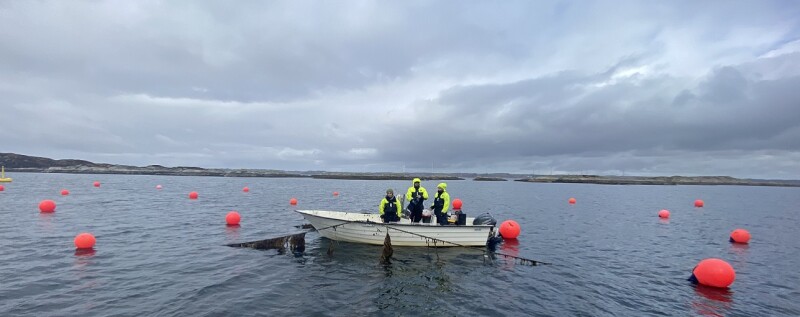An experiment is underway off the coast of Norway that will help decide whether seaweed is the next big technology breakthrough for carbon capture and storage (CCS). The concept is simple: use offshore seaweed farms to capture CO2 without taking up more valuable space on land. The growing process relies on nutrients found in the sea and photosynthesis enabled by sunlight—both of which come free.
What will not come as cheap is the technology and infrastructure needed to leverage aquaculture into a meaningful contribution to global CCS capacity. The job of showing that may be possible has been given to a joint industry project (JIP) called Seaweed Carbon Solutions. Its singular focus is to find ways to make seaweed cultivation work at scale and ultimately compete with established industrial-sized CCS technologies.
The recently stood up JIP launched its first pilot project in April with financial support from two oil and gas producers, Norway's Equinor and Sweden's Lundin Energy (which as of this month became known as Orrön Energy after the company announced it finalized its divestment of its oil assets to focus on renewable energy projects).
Other key funders include Norway's risk management firm DNV and applied research group SINTEF which are leading the $3-million pilot that will continue until the end of 2024.
If the pilot is successful, Oslo-based DNV said in a recent announcement that commercial-scale seaweed production could begin offshore central Norway as soon as 2025 from one or more floating farms. DNV added that the ultimate aim would be to capture millions of metric tons per annum (mtpa) of CO2 with the seaweed.
It was also suggested at a recent SPE conference by a SINTEF researcher that offshore oil and gas companies may someday consider co-locating seaweed farms with existing or soon-to-be decommissioned production platforms as a new way to offset emissions.
Trondheim-based SINTEF estimates that removing 2,500 metric tons of CO2 requires about 20,000 metric tons of seaweed to be grown across an area of 1 km2. That means capturing 5 mtpa of CO2—or about 12% of Norway's total annual emissions—requires on the order of 2000 km2 of ocean surface to be covered with seaweed farming installations.
Today the world cultivates around 30 million short tons of seaweed each year, or 27 million metric tons. Led by Asian producers, this seaweed is primarily grown for human consumption, animal feed, and cosmetics.
It is also mostly harvested by hand which suggests any effort to achieve the tonnage demanded for CCS will require a measure of automation. On this front, SINTEF has considered how automated fishery systems used in Norway's salmon farming sector could be repurposed to sow and harvest kelp instead.
Among the aspects of seaweed biomass that researchers find attractive is that it is easy to grow, requiring no fertilizers or pesticides. Additionally, seaweed grows rapidly.
The variety used in the Norwegian pilot—called sugar kelp—can grow by more than 1 cm/D, or to a length of 15 ft in just a few months. Champions of seaweed biomass compare such growth rates with forestation efforts that are used to obtain carbon credits since each new tree planted today may need 20 to 30 years to achieve its full CO2-capturing potential.

From the Sea to Soil
The Norwegian pilot is growing its kelp on long cables that are attached to ordinary buoys. Located in areas where sea and sun conditions are optimal for growth, the strands of kelp silently absorb the CO2 found in the surrounding water and convert it into carbohydrates and oxygen.
After about 6 months, SINTEF researchers believe the seaweed will capture all the CO2 it possibly can and that harvesting should begin. It then becomes a question of what to do with the seaweed so that it serves the purpose of CCS.
The first possibility the JIP is exploring is to bring the seaweed onshore and convert it into biochar. This uses the pyrolysis process by which the seaweed will be heated inside an oxygen-deprived chamber until it bakes down into a brittle black material similar to charcoal.
The resulting biochar is to then be used for soil enrichment; ergo the CO2 goes back into the ground. The JIP has noted that the biochar process will have to be accounted for with a CCS element of its own so that the overall production cycle does not end up emitting more CO2 than it stores.
The other idea is to sink the seaweed. The JIP believes that around 10% of all the CO2 captured in its approach will be sequestered passively as some of the seaweed falls apart and drifts to the sea bottom.
The same could be true for the other 90% if all the fully grown strands of kelp are bundled and sunk into the deepwater. The JIP believes at depths of at least 1000 m “there is little mixing with the surface water, so the material remains captured in the sediment. This means that the climate gases will not be released back into the atmosphere.”


